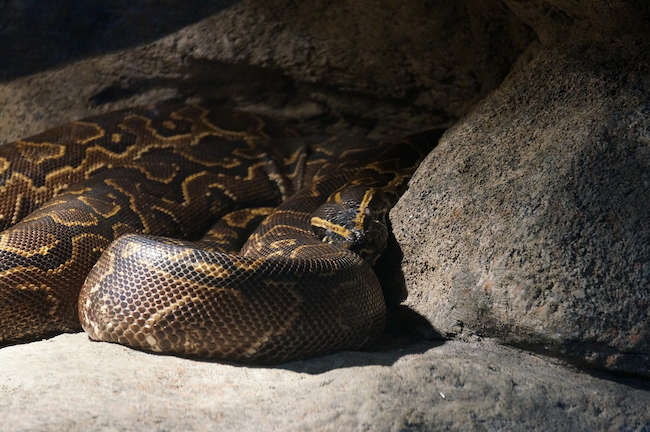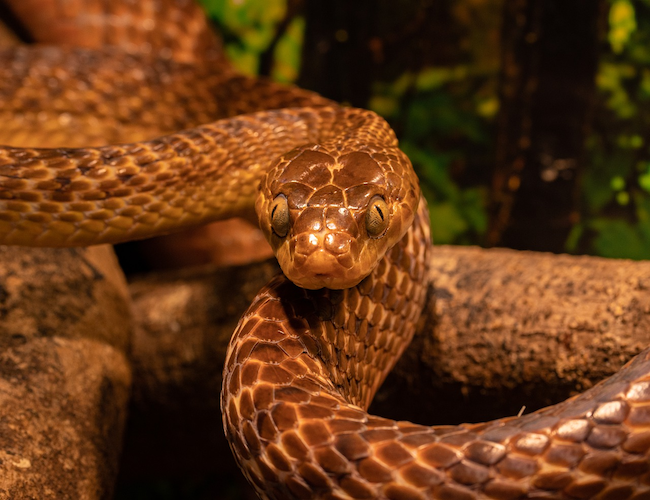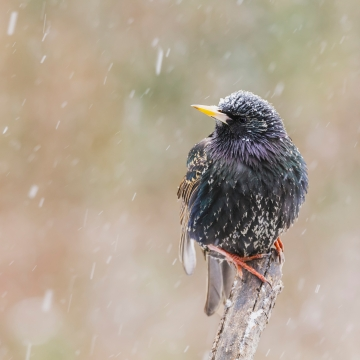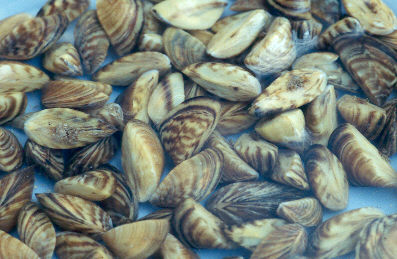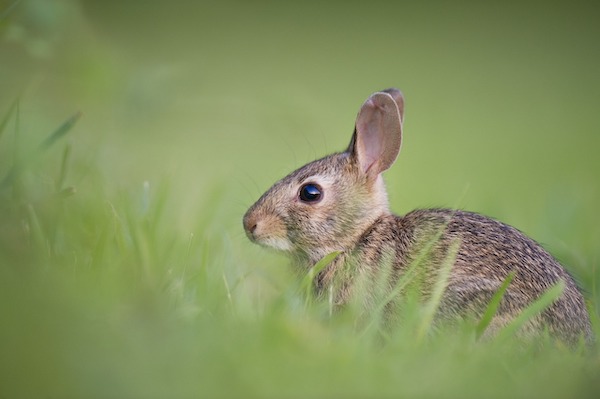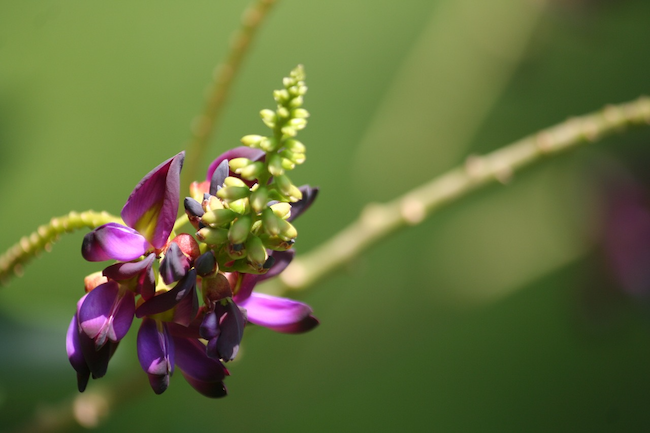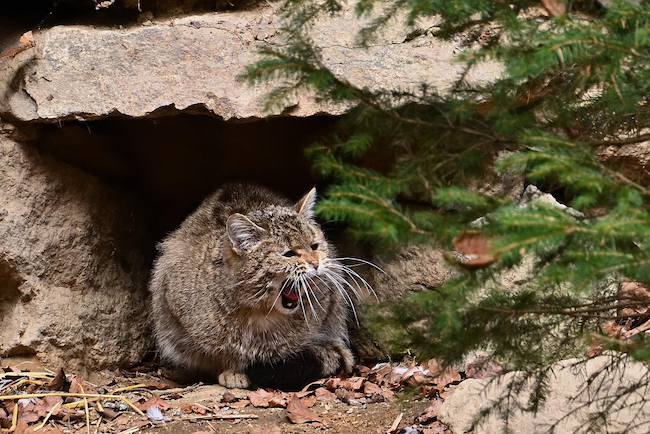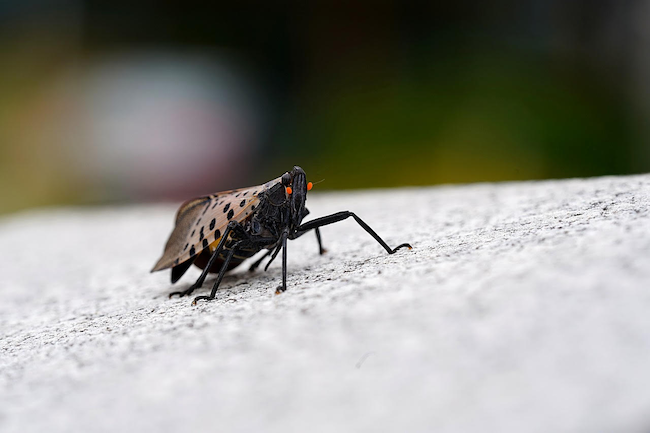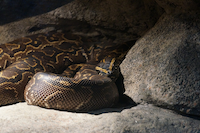 |
 |
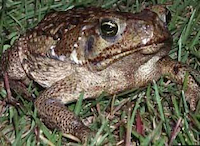 |
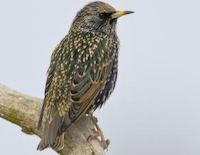 |
 |
Burmese Python |
Brown Tree Snake |
Cane Toad |
European Starling |
Zebra Mussels |
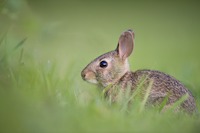 |
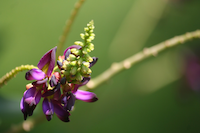 |
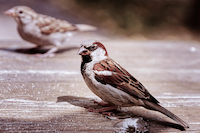 |
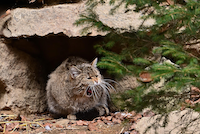 |
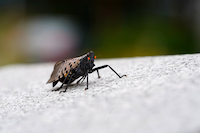 |
Rabbit |
Kudzu |
House Sparrow |
Feral Cat |
Spotted Lanternfly |
Burmese Python
The Burmese python (Python bivittatus), native to Southeast Asia, has established itself as one of the most notorious invasive species in the United States, particularly in the ecologically sensitive region of the Florida Everglades. This massive constrictor snake, known for its striking appearance and impressive size, has wreaked havoc on native wildlife populations, disrupting the delicate balance of this unique ecosystem.
Origin and Introduction
Burmese pythons were initially introduced to the United States through the exotic pet trade. Their popularity as pets led to accidental or deliberate releases into the wild. Over the years, these snakes have successfully established breeding populations in Florida, finding the subtropical climate and abundant prey sources to their liking.
Impacts on Native Wildlife
The Burmese python's voracious appetite and lack of natural predators in the Everglades have allowed their population to explode. They prey upon a wide range of species, including mammals, birds, and even alligators. Native species, such as raccoons, opossums, and various wading birds, have experienced significant declines due to predation by these formidable snakes.
Disruption of Ecosystem Dynamics
The introduction of Burmese pythons has disrupted the natural balance of the Everglades ecosystem. Many species that once played key roles in regulating populations of smaller animals have seen their numbers dwindle. This can lead to cascading effects on the entire food web, potentially resulting in further declines of native species.
Competition with Native Predators
The Burmese python's presence in the Everglades has also put it in direct competition with native predators like the Florida panther and the American alligator. As these predators vie for limited food resources, it can lead to increased stress and potentially impact their overall fitness and reproductive success.
Challenges in Management
Controlling the Burmese python population has proven to be a formidable challenge. Their cryptic coloration and ability to inhabit a wide range of habitats make them difficult to locate. Additionally, their high reproductive rates can lead to rapid population growth even with control efforts in place.
Conservation Efforts
Various organizations, including state agencies, non-profits, and research institutions, have mobilized efforts to combat the invasion of Burmese pythons in the Everglades. These efforts include organized hunting and removal programs, research into snake behavior and habitat use, and public awareness campaigns.
Back to top
Brown Tree Snake
The Brown Tree Snake(Boiga irregularis), native to Australia, Papua New Guinea, and Indonesia, has become one of the most notorious invasive species in the Pacific Islands. Its accidental introduction to the island of Guam in the mid-20th century led to a cascade of ecological disruptions, highlighting the devastating impact an invasive species can have on a vulnerable ecosystem.
Origins and Spread
The Brown Tree Snake's inadvertent introduction to Guam is believed to have occurred during World War II, likely as stowaways on military cargo shipments. With no natural predators and an abundance of prey, the snake's population exploded, leading to an ecological disaster of unparalleled proportions.
Impacts on Native Wildlife
One of the most devastating consequences of the Brown Tree Snake's invasion has been its decimation of bird populations on Guam. The snake is an adept climber, allowing it to reach nests high in the trees, where it consumes eggs, chicks, and even adult birds. Several native bird species, including the Guam Kingfisher and the Mariana Crow, have suffered dramatic declines and some are now critically endangered.
Economic and Human Health Implications
Beyond its ecological impact, the presence of the Brown Tree Snake has had economic ramifications. The snake has been responsible for power outages due to its penchant for climbing power lines, resulting in costly repairs and disruptions. Additionally, the snake's venomous bite, while not lethal to humans, can cause painful swelling and discomfort.
Management Efforts
Recognizing the severity of the situation, extensive efforts have been made to control and mitigate the Brown Tree Snake's impact on Guam. These include extensive trapping and removal programs, development of snake-proof barriers around sensitive areas, and public awareness campaigns to educate residents about snake prevention and safety measures.
Lessons Learned and Preventative Measures
The tragic case of the Brown Tree Snake in Guam serves as a sobering reminder of the far-reaching consequences of invasive species introductions. It underscores the critical importance of biosecurity measures in ports and airports to prevent accidental transportation of potentially harmful species. Additionally, early detection and rapid response protocols are crucial in the event of an invasive species incursion.
International Cooperation
Given the global nature of trade and travel, international cooperation is paramount in preventing the further spread of invasive species. Efforts to monitor and regulate the movement of goods and people can significantly reduce the risk of unintentional introductions.
Back to top
Cane Toad
The Cane Toad (Rhinella marina), native to Central and South America, has become a major pest in various parts of the world due to its prolific breeding and toxic skin secretions. Its introduction to new environments has led to ecological imbalances and disruptions, illustrating the destructive potential of invasive species.
Origins and Spread
The Cane Toad was introduced to different regions as a misguided attempt to control agricultural pests. Originating in South and Central America, it was introduced to places like Australia, the Caribbean, and the Philippines. Unfortunately, without natural predators in these new environments, the toad's population quickly escalated.
Toxic Skin Secretions
One of the most distinctive features of the Cane Toad is its toxic skin secretions. These secretions contain bufotoxins, which are harmful to many predators, including native wildlife and domestic pets. This defense mechanism has allowed the Cane Toad to thrive without significant predation in its introduced habitats.
Impact on Native Wildlife
The introduction of Cane Toads has had devastating consequences for native wildlife. Many predators, such as snakes, birds, and small mammals, that attempt to consume the toads are often poisoned by their toxic secretions. This has led to declines in native predator populations and imbalances in local ecosystems.
Competition for Resources
Cane Toads are prolific breeders and can rapidly outcompete native amphibian species for resources like food and breeding sites. Their aggressive feeding habits and ability to adapt to a wide range of environments make them formidable competitors for limited resources.
Efforts at Control and Management
Various strategies have been employed to control the spread of Cane Toads in affected regions. These include physical removal, traps, and barriers. Additionally, research is ongoing to develop biological controls and better understand the toad's behavior and ecology.
Lessons Learned
The case of the Cane Toad serves as a stark reminder of the unintended consequences that can arise from introducing non-native species. It emphasizes the importance of thorough risk assessments and the need for responsible management practices when dealing with potentially invasive species.
Back to top
European Starling
Origins and Spread
Originally native to Europe, Asia, and North Africa, European starlings were intentionally introduced to North America in the late 19th and early 20th centuries. They were released in Central Park, New York City, in the hopes of establishing populations of all birds mentioned in Shakespeare's plays.
Reproduction and Nesting Behavior
European starlings are highly adaptable birds known for their aggressive nesting behavior. They often displace native bird species from their nesting sites, taking over tree hollows, building ledges, and other prime locations for nesting. The European starlings is perhaps the most numerous bird in North America today.
Impact on Native Species
The presence of European starlings can have detrimental effects on local bird populations. They compete for nesting sites and food resources with native cavity-nesting birds, such as woodpeckers and bluebirds. This competition can lead to declines in native bird species, disrupting the natural balance of the ecosystem. Red-headed woodpeckers have been particularly imacted by the introduction of Starlings and have declined precipitously as a result in parts of their range.
Agricultural Impact
European starlings are known to cause significant damage to agricultural crops. They feed on fruits, grains, and insects, often in large flocks. This behavior can lead to economic losses for farmers and agricultural industries.
Control and Management
Efforts to control the European starling population have included methods such as trapping, shooting, and using avian repellents. However, managing their numbers remains a challenge due to their adaptability and prolific reproductive rate.
Back to top
Zebra Mussels
Zebra mussels (Dreissena polymorpha) are small, freshwater mollusks native to the Caspian and Black Sea regions of Europe and Asia. They have become a significant environmental concern in North America due to their rapid spread and detrimental impact on local ecosystems.
Origins and Introduction
Zebra mussels were first discovered in the Great Lakes in the late 1980s, likely introduced through ballast water from ships. Since then, they have spread to various water bodies across North America, including rivers, lakes, and reservoirs.
Physical Characteristics Adult zebra mussels are small, typically measuring between 1/4 to 1 1/2 inches in length. They have a distinctive D-shaped shell with dark and light alternating bands, resembling the stripes of a zebra, which gives them their name.Reproduction and Growth
Zebra mussels are highly prolific reproducers, with each female capable of producing up to a million eggs annually. They attach themselves to hard surfaces such as rocks, docks, and even other mollusk shells using strong byssal threads. This rapid reproduction rate contributes to their invasive success.
Impact on Ecosystems
Zebra mussels have a profound impact on native species and aquatic ecosystems. They filter large volumes of water, removing plankton and algae, which can disrupt the food chain and affect other aquatic organisms. This filtration can lead to clearer water, but it can also have negative consequences for certain fish and invertebrate species.
Economic Consequences
The presence of zebra mussels can result in substantial economic costs. They clog water intake pipes, fouling industrial equipment, power plants, and municipal water supplies. Mitigation efforts and maintenance to deal with the zebra mussel infestations can be expensive for affected industries and municipalities.
Control and Management
Efforts to control zebra mussel populations include chemical treatments, physical removal, and the use of biocontrols. However, their tenacious attachment and rapid reproductive rate make complete eradication extremely challenging.
Back to top
Rabbits (Oryctolagus cuniculus) are small mammals known for their prolific breeding and adaptability. While they are beloved pets to many, in certain regions, they have become problematic as invasive species, causing ecological imbalances and agricultural damage.
Origins and Spread
Native to Europe and parts of Asia and Africa, rabbits have been introduced to various continents, including Australia, North America, and New Zealand. These introductions were often intentional for hunting and fur farming, but in many cases, they led to unintended consequences.
Reproduction and Adaptability
Rabbits are well-known for their rapid breeding rate. A single pair of rabbits can produce dozens of offspring in a year, leading to exponential population growth. They are also highly adaptable, thriving in a wide range of habitats, from grasslands to forests.
Impact on Ecosystems
As herbivores, rabbits can have significant impacts on local vegetation. In areas where they are introduced, they can overgraze native plants, leading to soil erosion and changes in plant composition. This can, in turn, affect other wildlife species dependent on those plants for food and shelter.
Agricultural Damage
Rabbits can cause substantial damage to agricultural crops. They feed on a variety of plants, including grasses, grains, and vegetables, which can lead to economic losses for farmers. Additionally, their burrowing behavior can undermine the structural integrity of fields and pastures.Control and Management
Efforts to control rabbit populations have included methods such as fencing, trapping, shooting, and biological control measures. However, due to their adaptability and reproductive capabilities, achieving effective control can be challenging.
Back to top
Introduction
Kudzu (Pueraria montana var. lobata) is a fast-growing vine native to East Asia. It has gained notoriety as one of the most notorious invasive species, wreaking havoc on ecosystems and landscapes in the United States and other regions where it has been introduced.
Origins and Spread
Originally introduced to the United States for erosion control and as a forage crop in the late 19th and early 20th centuries, kudzu quickly escaped cultivation and began spreading aggressively. It is now found in many southeastern states and has also been introduced in other parts of the world.
Growth and Characteristics
Kudzu is characterized by its rapid growth rate, with vines capable of growing up to a foot per day during the growing season. The leaves are large, typically composed of three broad leaflets. The vine also produces clusters of purple, pea-like flowers and bean-like seed pods.
Impact on Ecosystems
Kudzu's rapid growth and ability to climb and cover vegetation have led to its nickname as the "vine that ate the South." It can smother native plants, preventing them from receiving sunlight and eventually killing them. This has cascading effects on the entire ecosystem, affecting wildlife habitats and food sources.
Soil and Environmental Effects
Kudzu's extensive root system can alter soil composition and increase erosion potential. The nitrogen-fixing bacteria associated with kudzu can also affect soil nutrient levels, potentially disrupting natural nutrient cycles in affected areas.
Control and Management
Controlling kudzu is a significant challenge due to its rapid growth and extensive root system. Methods of control include mechanical removal, herbicide application, and introducing natural predators. Long-term management efforts are often necessary to prevent re-establishment.
Conclusion
The spread of kudzu serves as a stark reminder of the unintended consequences that can arise from the introduction of non-native species. Understanding the biology and impact of invasive species like kudzu is essential for implementing effective management strategies and protecting native ecosystems.
Back to top
House Sparrow
Introduction
The house sparrow (Passer domesticus) is a small bird species that has successfully adapted to urban environments around the world. While it is a familiar sight in many cities, the house sparrow's introduction to new regions has had complex ecological and economic consequences.
Origins and Spread
Originally native to Eurasia and North Africa, the house sparrow has been intentionally introduced to various continents over the years. It was introduced to North America in the mid-19th century and has since become one of the most widely distributed bird species on the planet.
Adaptability and Behavior
House sparrows are highly adaptable birds known for their close association with human settlements. They feed on a wide range of food sources, including seeds, grains, and human food scraps. Their nesting behavior often leads them to utilize man-made structures, such as buildings and eaves.
Impact on Native Species
The introduction of house sparrows has had mixed effects on native bird species. They can compete with native birds for nesting sites and food resources, potentially leading to declines in certain species. Additionally, they may transmit diseases to other bird populations. In North America, the proliferation of the house sparrow has had negative effects on many cavity nesting birds such as eastern bluebirds and purple martins. The aggressive house sparrow is known to kill both adult birds and their young in competing for cavities.
Economic and Agricultural Effects
While house sparrows are adaptable and successful in urban environments, they can also be considered pests in agricultural settings. They can cause damage to crops and stored grain, leading to economic losses for farmers and agricultural industries.
Control and Management
Efforts to control house sparrow populations have included methods such as trapping, exclusion, and habitat modification. However, due to their adaptability and prolific breeding rate, achieving effective control can be challenging.
Conclusion
The house sparrow's status as an invasive species illustrates the complex interactions between introduced species and their new environments. Understanding their behavior and impact is crucial for implementing effective management strategies to mitigate their effects on native wildlife and agriculture.
Back to top
Introduction
Feral cats (Felis catus) have established themselves as one of the most detrimental invasive species in New Zealand, posing serious threats to native wildlife and ecosystems.
Origins and Introduction
Feral cats were introduced to New Zealand by early European settlers. Initially brought for pest control purposes, they quickly established self-sustaining populations in the wild, taking advantage of the country's favorable conditions for their survival.
Ecological Impact
Feral cats are skilled predators, known for their hunting prowess. In New Zealand, they pose a significant threat to native bird species, including ground-nesting birds like kiwis and flightless parrots. Their predation pressure has contributed to the decline of several vulnerable and endangered species.
Reproduction and Population Growth
Feral cats reproduce rapidly, with females capable of giving birth to multiple litters of kittens each year. This high reproductive rate, combined with a lack of natural predators, has allowed feral cat populations to grow exponentially in many parts of New Zealand.
Control and Management
Efforts to control feral cat populations in New Zealand include trapping, poisoning, and spaying/neutering programs. Conservation organizations and government agencies work tirelessly to protect vulnerable native species and restore balance to the ecosystem.
Challenges and Controversies
The management of feral cats in New Zealand is not without its challenges and controversies. Some argue for more aggressive eradication measures, while others advocate for humane methods. Balancing the needs of native wildlife with ethical considerations remains a topic of ongoing debate.
Future Prospects
Addressing the issue of feral cats in New Zealand requires a multifaceted approach, involving continued research, public education, and coordinated conservation efforts. As the country strives to protect its unique biodiversity, finding effective solutions to mitigate the impact of feral cats remains a critical priority.
Back to top
Introduction
The spotted lanternfly (Lycorma delicatula) is an invasive insect species native to parts of Asia. It has become a significant concern in various regions due to its rapid spread and the damage it causes to agricultural crops and plants.
Origins and Spread
Originally found in China, Vietnam, and other parts of Southeast Asia, the spotted lanternfly was first identified in the United States in 2014. It is believed to have arrived via international trade and has since spread to multiple states.
Physical Characteristics
The spotted lanternfly is a striking insect, with wings featuring distinctive spots and bright red hind wings. In its early nymph stages, it displays black and white markings. The insect undergoes significant metamorphosis as it matures.
Feeding Behavior and Impact
The spotted lanternfly feeds on the sap of a wide variety of plants, including grapes, fruit trees, hardwoods, and ornamentals. This feeding can weaken and stress plants, making them more susceptible to diseases and other pests. In agricultural areas, it poses a significant threat to crops.
Damage to Agriculture
The presence of spotted lanternflies in agricultural regions has led to economic losses for farmers. They can cause damage to fruit orchards, vineyards, and other crops, impacting the livelihoods of those in the affected areas.
Control and Management
Efforts to control spotted lanternfly populations include both chemical and non-chemical methods. Insecticides, biological controls, and physical barriers are some of the strategies employed to manage their spread. Ongoing research is also focused on finding more effective control measures.
Environmental Concerns
The spread of spotted lanternflies can have broader environmental consequences. They disrupt local ecosystems by affecting the health and vitality of host plants. Additionally, the introduction of an invasive species can alter food chains and interactions among native species.
Conclusion
The presence of the spotted lanternfly underscores the need for vigilance in monitoring and managing potential invasive species. Efforts to control its spread and minimize its impact on agriculture and the environment are critical to protecting local ecosystems and economies.
